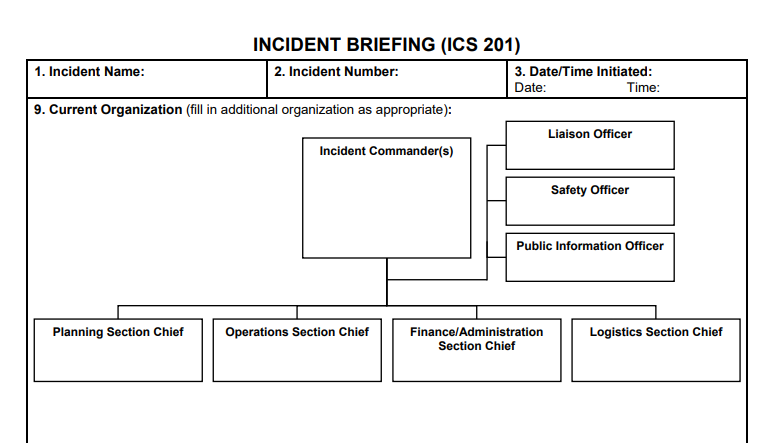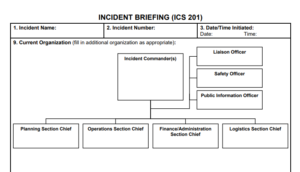Communications in the Age of COVID-19
March 14, 2020
)
Communications in the Age of COVID-19
Do you have a crisis communications plan in place for your business? Do you have an emergency preparedness plan documented for your organization? Having worked in healthcare and at a resort over the last 20 years, I underwent extensive crisis communications training and HICS (Healthcare Incident Command System) training, and have learned the importance of being ready ahead of an emergency. I have been the PIO (Public Information Officer) for situations ranging from murders to fatal accidents to system failures to active shooters to norovirus outbreaks. The cause of the emergency varied but what they all had in common was a well defined crisis communication plan where everyone knew their role, staff was trained and the plan itself was documented and available for all to see.
Fail to Plan, Plan to Fail
No one wants to plan for a disaster. It’s easy to think you can “wing it,” especially if you are a smaller business. But in this current fluid situation, it may be difficult to react on the fly. Larger organizations should quite literally have a binder on the shelf, digital copy on a server and even a copy OFF SITE in the event of an on-site disaster, outlining who does what, emergency contacts and roles and responsibilities.
In early March, I sent my clients (mostly travel related businesses) an email, suggesting they think about emergency communications in case this COVID-19 situation escalated. When did most of them reach out to me? Yesterday. Friday the 13th. I can tell you, not one of them have a formal crisis plan, which covers not only communications issues but also emergency operations. Just one call from the CDC saying a guest with the illness visited their business, and it’s going to be a mad dash to respond. I’d recommend everyone be ready with their “what if” business scenarios, how business might operate if staff goes on quarantine, if a closure is necessary or if mass communications are necessary either to staff or to guests. Wouldn’t it be great to do this work and not need it?Yes, yes it would be.
Roles & Responsibilities
Who does what? In the case of a disaster, the normal organizational hierarchy might not apply. Your company’s president might become the spokesperson, and not the incident command chief making operational decisions. Your Public Information Officer (PIO) might not be your marketing manager, if the manager is, in this case, sick or out of the country. A good crisis communications plan lists each person and their role, and also identifies a back up in the case of extenuating circumstances.
HICS is healthcare focused, but having undergone crisis communications training when working for a large resort operator, I can tell you there is a lot of commonalities. One of the most important aspects is the concept of having an Incident Commander. Having one person in charge with others in defined roles reporting up to them makes decision making crystal clear. The last thing you need in an emergency is a lack of clear reporting structure. And as stated above, the reporting structure might not be the one during normal business. Have a written plan, and then be ready to drop in names for that specific incident when things start getting real. The chart below shows the structure of the forms in a HICS plan.

You can find a free downloadable booklet of HICS forms here. Ideally you will have gone through this training BEFORE an emergency, but it’s worth looking at now and gleaning what might help your specific business, healthcare or not.
Communications
This is important. How you communicate to your staff, your customers and the community is critical. Who is your PIO? Is your staff clear that they are not to respond to media requests for information, and if so do they know who to refer them to. If all those inquiries usually goes to the president’s office, guess what. He or she might not be the guy in the face of an emergency. Enacting an emergency communication plan puts those decisions in one place and makes it easier to share with staff.
I am seeing questions coming in from customers of my clients that are difficult to answer. Is it safe to come there? What are you doing to clean your premises? Will you loosen your cancellation policy? What’s going on with an event you have planned?
Having a PIO named and having scripting and messaging for your staff, and a single point of contact for media inquiries ensures consistent and accurate information is disseminated.
There are many crisis communications plan templates out there – this is one for travel related businesses. Consider sitting down with your management team and your presumed PIO and get ready for any possible business disruption coming your way. It may be COVID-19, it may be a bomb threat, it may be a mass casualty event. The beauty of being prepared is that you are prepared for anything.
Who Ya Gonna Call
In the event of a catastrophe at your specific business, if you feel you need extra help, you can bring in a crisis communications specialist, usually a PR pro who has been tested by fire in other crisis.
I am currently advising many of my existing clients in responding to this COVID-19 situation, from event cancellation communications to emails to frequent guests on new cleaning protocols to helping make decisions on pricing and cancellation policies. It’s a lot to take in. But if you need help, contracting with a PR pro can help avoid misteps.
There are other crisis communications expert out there too – try the PSRA for more information.
So stay safe out there, and consider a planning session to go through many “what if” scenarios so you are ready for whatever comes our way next.
